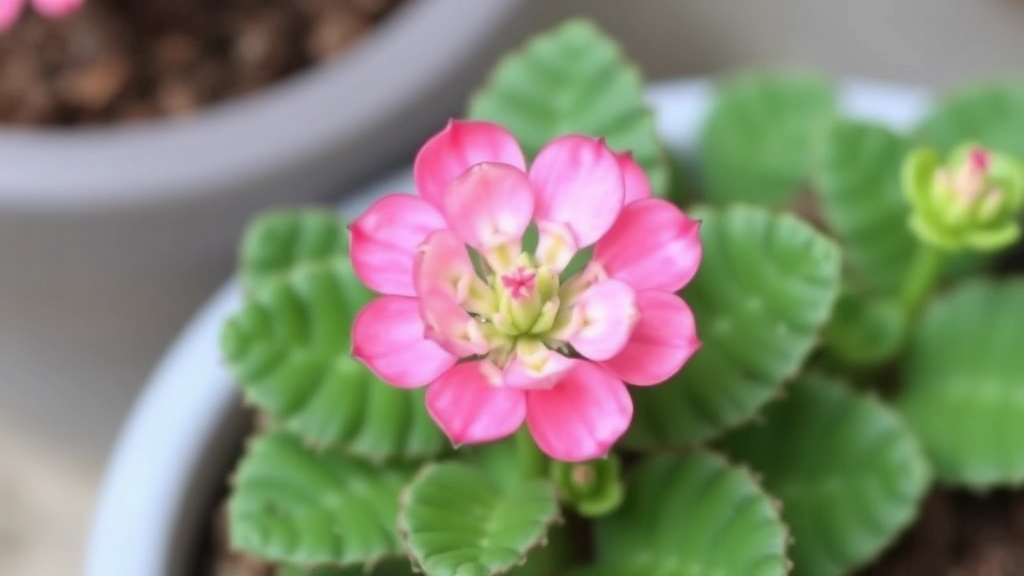Mastering Kalanchoe Plant Care
Looking to master Kalanchoe plant care? You’re in the right place! This guide will walk you through everything you need to know, from the best light conditions to optimal watering schedules. Whether you’re growing your Kalanchoe indoors or outdoors, we’ve got you covered with practical tips to keep your plant thriving.
Essentials of Kalanchoe Care
Let’s dive into the essentials: choosing the right soil, understanding fertilizer needs, and managing temperature requirements. We’ll also tackle common issues like overwatering and root rot, and show you how to prune and propagate your Kalanchoe for maximum growth. Ready to get started? Let’s ensure your Kalanchoe blooms beautifully all year round.
Best Light Conditions for Kalanchoe Growth
When it comes to nurturing Kalanchoe plants, one of the most pressing concerns is their light requirements.
Kalanchoe thrives in bright, indirect sunlight, making it essential to position them correctly for optimal growth.
Optimal Watering Schedule for Healthy Kalanchoe
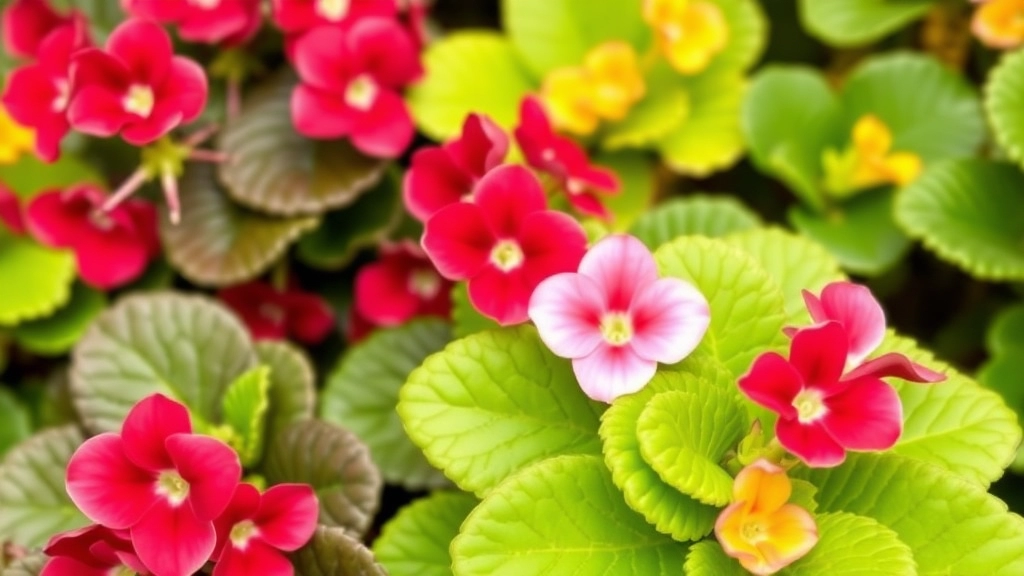
Are you struggling to find the right balance when it comes to watering your Kalanchoe? You’re not alone!
These beauties thrive on a specific watering routine, and getting it just right is key to keeping them healthy and vibrant.
Understanding Kalanchoe’s Water Needs
Kalanchoe plants are succulents, which means they store water in their leaves. This unique trait influences how often you should water them. Here’s a quick guide:
- Check the Soil: Always feel the top inch of the soil. If it’s dry, it’s time to water.
- Water Deeply: When you do water, make sure to soak the soil well. This encourages deep root growth.
- Frequency: During the growing season (spring and summer), aim to water every 2-3 weeks. In the winter, reduce this to once a month.
Signs of Overwatering vs. Underwatering
Knowing what to look for can help you adjust your schedule:
- Overwatering: Yellowing leaves, mushy stems, and a musty smell from the soil.
- Underwatering: Wrinkled leaves and a droopy appearance.
Tips for Watering Kalanchoe
- Use Room Temperature Water: Cold water can shock the plant.
- Consider the Environment: Hotter, drier climates may require more frequent watering.
- Drainage is Key: Always ensure your pot has drainage holes to prevent standing water.
Choosing the Right Soil for Kalanchoe Plants
When it comes to nurturing your Kalanchoe, the soil you choose plays a pivotal role in its health and growth. Many plant enthusiasts often wonder, “What type of soil is best for Kalanchoe?”
Fertilizer Recommendations for Promoting Kalanchoe Blooms
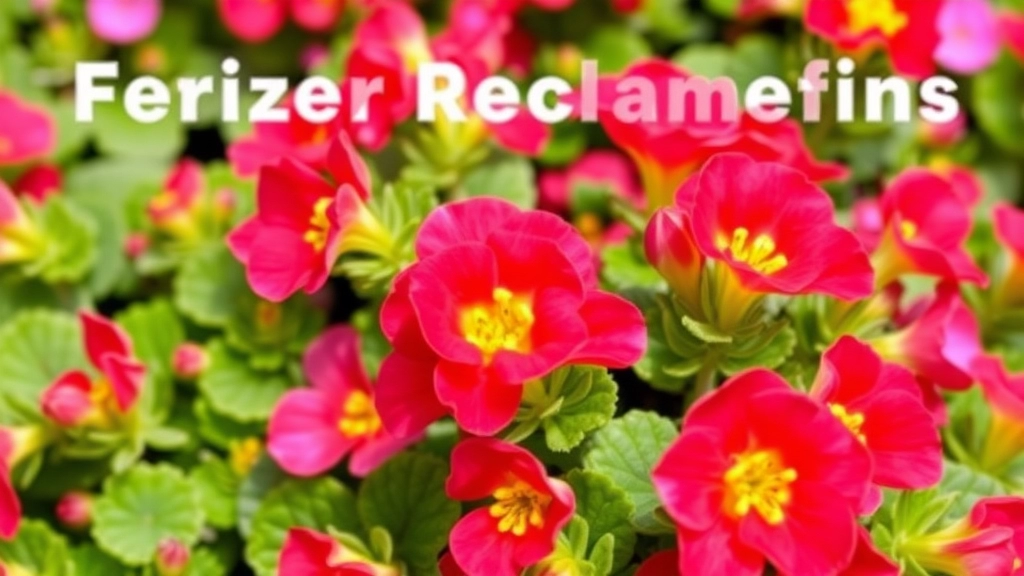
When it comes to nurturing your Kalanchoe, many plant enthusiasts often wonder about the best ways to encourage those stunning blooms.
Understanding Kalanchoe’s Nutritional Needs
Kalanchoe plants thrive on a balanced approach to fertilisation. Here are some key considerations:
- Type of Fertiliser: Use a balanced, water-soluble fertiliser, ideally with an N-P-K ratio of 15-30-15. This promotes healthy growth and vibrant flowers.
- Frequency: Fertilise every 4-6 weeks during the growing season (spring and summer). This timing aligns with their natural growth cycle.
- Dilution: Always dilute the fertiliser to half strength. Over-fertilising can lead to salt buildup, which can harm the roots.
Additional Tips for Blooming Success
- Organic Options: Consider using organic fertilisers, such as fish emulsion or seaweed extract, to provide a gentle nutrient boost.
- Timing Matters: Begin fertilising after the plant has established itself and is showing new growth. Avoid fertilising during dormancy in winter.
- Signs of Nutrient Deficiency: Yellowing leaves or poor blooming can indicate a lack of nutrients. Adjust your fertilisation routine accordingly.
Temperature Requirements for Indoor and Outdoor Kalanchoe
When caring for Kalanchoe, understanding temperature requirements is vital for ensuring your plant thrives.
Ideal Temperature Range
Kalanchoe plants flourish in specific temperature conditions. Here’s what you need to know:
- Indoor Conditions:
- Ideally, keep your Kalanchoe between 18°C to 24°C.
- Avoid placing them near drafts or heating vents, as sudden temperature changes can stress the plant.
- Outdoor Conditions:
- Kalanchoe prefers temperatures between 15°C and 26°C.
- They can tolerate brief periods of cooler weather, but anything below 10°C can be harmful.
Seasonal Considerations
Temperature needs can change with the seasons.
- Summer:
- Ensure your Kalanchoe is shielded from intense afternoon sun, which can lead to heat stress.
- Winter:
- If grown outdoors, consider bringing your Kalanchoe inside if temperatures drop significantly.
Signs of Temperature Stress
Recognising the signs of temperature-related stress can help you act quickly.
- Wilting or Drooping Leaves: Indicates either too much heat or cold.
- Leaf Drop: Can be a sign of temperature fluctuations.
For more detailed information on maintaining optimal conditions for your Kalanchoe, check out our Ideal Temperature for Kalanchoe Blossfeldiana Growth guide. Additionally, understanding Why Your Kalanchoe is Not Flowering can help you address other common issues related to temperature and care.
How to Prune Kalanchoe for Maximum Growth
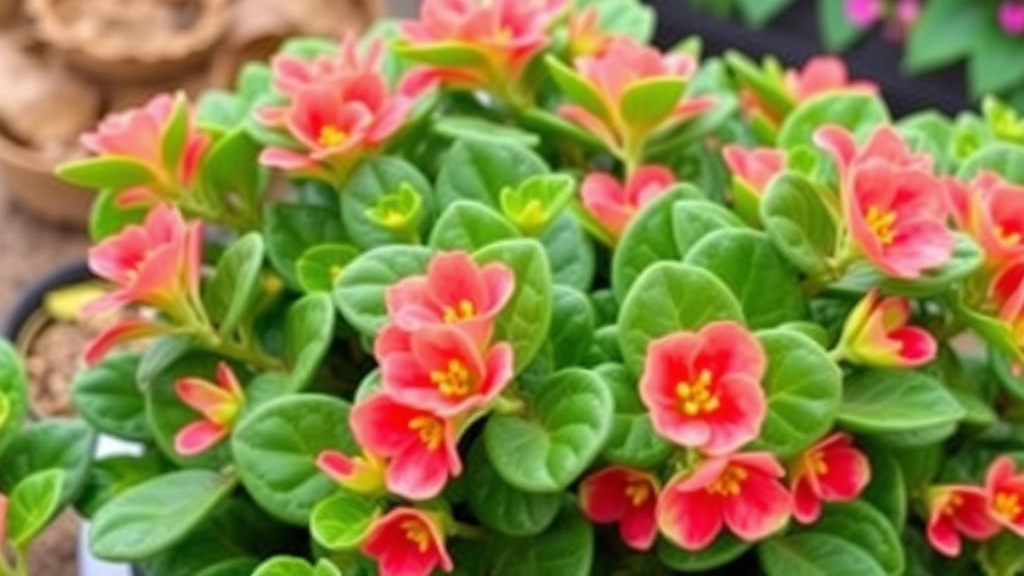
So, you’ve got your Kalanchoe thriving, but are you giving it the TLC it needs to really shine? Pruning is a game-changer for these beauties. It’s not just about aesthetics; it promotes healthy growth and vibrant blooms.
Why Prune Kalanchoe?
You might be wondering, “Why bother with pruning?” Well, here’s the scoop:
- Encourages New Growth: Snipping back old stems can lead to a bushier plant.
- Removes Dead or Dying Leaves: Keeps your Kalanchoe looking fresh and healthy.
- Promotes Blooms: Pruning can stimulate flowering, giving you those stunning clusters of colour.
When to Prune
Timing is everything. The best time to prune your Kalanchoe is:
- After Flowering: Once those blooms fade, it’s time to get snipping.
- Spring: As the growing season kicks in, your plant will bounce back quickly.
How to Prune Your Kalanchoe
Here’s a simple guide to get you started:
- Gather Your Tools: You’ll need sharp scissors or pruning shears. Clean them to avoid spreading disease.
- Inspect Your Plant: Look for any dead or wilted leaves and spent flowers.
- Cut Back:
- Trim off dead leaves at the base.
- For spent flowers, cut the stem just above the first set of healthy leaves.
- If your plant is leggy, cut back stems to a few inches above the soil.
- Don’t Overdo It: Aim to remove about 20-30% of the plant. Less is more!
Aftercare
Once you’ve pruned, your Kalanchoe will need a bit of extra care:
- Watering: Hold off on watering for a few days to let the cuts heal.
- Light: Ensure it gets plenty of indirect sunlight to encourage new growth.
- Fertilize: After a couple of weeks, you can start fertilising again to boost recovery.
Common Pests and How to Prevent Infestations
Kalanchoe plants can be a stunning addition to your home or garden, but they are not immune to pests.
How to Propagate Kalanchoe from Cuttings
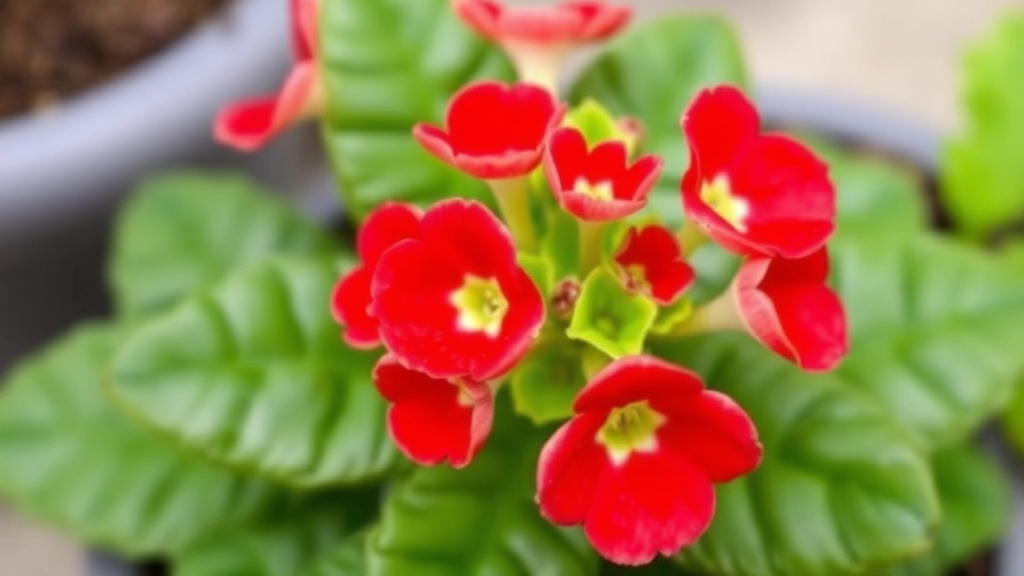
So, you’ve got a lovely Kalanchoe and you’re thinking, “How can I get more of these beauties?”
Propagation from cuttings is not just easy; it’s a fun way to expand your plant family without breaking the bank.
Why Propagate Kalanchoe?
- Cost-effective: Instead of buying new plants, you can create your own.
- Personal connection: Each new plant has a story, just like your original.
- Plant diversity: You can experiment with different varieties.
Steps to Propagate Kalanchoe from Cuttings
- Choose the Right Cutting:
- Look for healthy stems with at least 2-3 leaves.
- Avoid any that look wilted or discoloured.
- Make the Cut:
- Use clean, sharp scissors or shears.
- Cut just below a leaf node to encourage root growth.
- Let it Callous:
- Place the cutting in a dry, warm spot for a few hours or overnight.
- This helps prevent rot when you plant it.
- Prepare the Soil:
- Use well-draining soil, like a cactus mix.
- You can also mix regular potting soil with sand or perlite.
- Plant the Cutting:
- Make a small hole in the soil with your finger or a pencil.
- Insert the cutting about an inch deep and gently firm the soil around it.
- Water Sparingly:
- Mist the soil lightly, but don’t soak it.
- Overwatering is a common mistake!
- Create a Humid Environment:
- Cover the pot with a plastic bag or a clear dome to retain moisture.
- Make sure there’s some airflow to prevent mould.
- Find the Right Spot:
- Place it in bright, indirect light.
- Avoid direct sunlight until the roots are established.
- Wait for Roots to Form:
- In a few weeks, you should feel resistance when you gently tug on the cutting.
- That’s a good sign roots are growing!
- Transplant When Ready:
- Once roots are established, you can move your new Kalanchoe to a bigger pot.
Tips for Success
- Patience is Key: Not every cutting will take, and that’s okay.
- Keep It Clean: Always use clean tools to prevent disease.
- Experiment: Try different Kalanchoe varieties for a colourful collection.
Managing Overwatering and Root Rot in Kalanchoe
Are you noticing yellowing leaves or a wilting Kalanchoe? These could be signs of overwatering, a common issue that can lead to root rot. Understanding how to manage these problems is crucial for maintaining a healthy plant.
Recognising Overwatering
- Yellow Leaves: If your Kalanchoe’s leaves are turning yellow, it’s often a telltale sign of overwatering.
- Wilting: Surprisingly, overwatered plants can also appear wilted, similar to those that are underwatered.
- Mushy Stems: Check the stems; if they feel soft or mushy, root rot may have set in.
Preventing Overwatering
- Soil Choice: Use well-draining soil. A cactus or succulent mix works wonders.
- Pot Selection: Ensure your pot has drainage holes to allow excess water to escape.
- Watering Schedule: Water only when the top inch of soil is dry. This helps prevent soggy roots.
Managing Root Rot
If you suspect root rot has already taken hold, swift action is essential:
- Remove the Plant: Gently take your Kalanchoe out of its pot.
- Inspect the Roots: Look for dark, mushy roots. Healthy roots should be white and firm.
- Trim Affected Roots: Cut away any rotting roots with clean scissors.
- Repot: Place the plant in fresh, dry soil and a clean pot to prevent further issues.
Signs of Recovery
After addressing overwatering and root rot, your Kalanchoe may show signs of recovery:
Repotting Kalanchoe: When and How to Do It
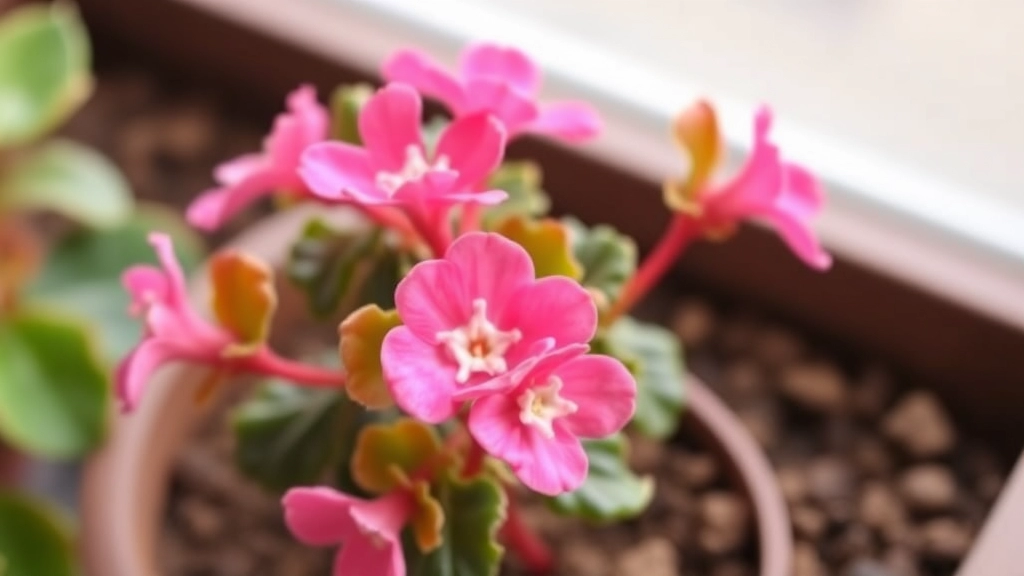
So, you’ve been nurturing your Kalanchoe, and it’s thriving. But now you’re wondering, when is the right time to repot it?
Repotting is crucial for maintaining the health of your plant.
When to Repot Kalanchoe
- Root Bound: If you notice roots growing out of the drainage holes, it’s time to repot.
- Soil Degradation: If the soil looks compacted or depleted, a fresh mix is needed.
- Growth Stagnation: If your Kalanchoe isn’t growing as it should, it might need more space.
How to Repot Kalanchoe
- Choose the Right Pot: Pick a pot that’s one size larger than the current one. Ensure it has drainage holes.
- Select Quality Soil: Use a well-draining potting mix, ideally one formulated for succulents.
- Remove the Plant: Gently take the Kalanchoe out of its old pot. Shake off excess soil but be careful with the roots.
- Inspect the Roots: Look for any signs of rot or damage. Trim any unhealthy roots with clean scissors.
- Add Soil: Place a layer of fresh soil at the bottom of the new pot. Position your Kalanchoe in the centre and fill in around it with more soil.
- Water Lightly: After repotting, give it a light watering. Avoid soaking it to prevent root rot.
- Find a Good Spot: Keep it in a well-lit area but out of direct sunlight for a few days to help it acclimate.
Seasonal Kalanchoe Care: Winter vs. Summer
When it comes to caring for Kalanchoe, understanding the seasonal needs of these resilient plants is crucial. Many gardeners often wonder how to adjust their care routines as the seasons shift.
Summer Care for Kalanchoe
In the summer, Kalanchoe thrives with longer daylight hours and warmer temperatures. Here are some essential tips for summer care:
- Light: Ensure your Kalanchoe receives bright, indirect sunlight. Direct sunlight can scorch the leaves.
- Watering: Water more frequently, allowing the top inch of soil to dry out between waterings.
- Humidity: Kalanchoe prefers lower humidity. Avoid excessive misting.
- Fertilising: Use a balanced liquid fertilizer every 4-6 weeks to encourage lush growth and vibrant blooms.
Winter Care for Kalanchoe
As winter approaches, Kalanchoe’s needs change significantly. Many gardeners worry about their plants surviving the colder months. Here’s how to adapt:
- Light: Position your Kalanchoe near a bright window where it can soak up as much light as possible.
- Watering: Reduce watering frequency. Allow the soil to dry out more thoroughly to prevent root rot.
- Temperature: Keep the plant in a warm environment, ideally between 15-20°C (59-68°F). Avoid placing it near cold drafts.
- Fertilising: Cut back on fertiliser during the winter months, as Kalanchoe enters a rest period.
By adjusting your care routine according to the seasons, you can ensure your Kalanchoe remains healthy and vibrant year-round. For more detailed advice, check out our expert tips for outdoor Kalanchoe care and our ultimate guide to fuzzy Kalanchoe care.
Ever wondered why your Kalanchoe isn’t blooming like it used to?
You’re not alone. Many Kalanchoe lovers face this dilemma.
But don’t worry, I’ve got some simple tips to help your plant bloom again!
### 1. Light Exposure
– **Bright, Indirect Light**: Kalanchoe loves light!
– Place it near a window but avoid harsh direct sunlight that can scorch the leaves.
– A south or west-facing window is perfect.
### 2. Pruning After Blooming
– After your Kalanchoe finishes its flowering period, give it a little trim.
– Snip off the spent blooms and any leggy growth.
– This encourages new growth and more flowers.
### 3. Watering Wisely
– Let the soil dry out between waterings.
– Overwatering can lead to root rot, which stops blooming. For more detailed tips on watering, check out our [optimal watering tips for healthy florist Kalanchoe](https://planthq.org/optimal-watering-tips-for-healthy-florist-kalanchoe/).
– Water thoroughly, then wait until the top couple of inches of soil are dry.
### 4. Fertilize for Flowers
– Use a balanced liquid fertiliser every 4-6 weeks during the growing season.
– A fertiliser high in phosphorus can boost those blooms!
### 5. Temperature Control
– Keep your Kalanchoe in a warm spot, ideally between 20-25°C (68-77°F).
– Avoid cold drafts or sudden temperature changes.
### 6. Dark Periods for Reblooming
– Kalanchoe is a short-day plant.
– To encourage blooming, give it about 14-16 hours of darkness each night for several weeks. This mimics its natural blooming cycle.
### 7. Patience is Key
– Sometimes, it just takes time.
– Keep caring for your plant, and soon you’ll see those beautiful blooms return. For more information on why your Kalanchoe might not be flowering, visit our [why your Kalanchoe isn’t flowering](https://planthq.org/why-your-kalanchoe-isnt-flowering-causes-and-solutions/) guide.
FAQs on Kalanchoe Plant Care
What is the optimal watering schedule for Kalanchoe plants?
Kalanchoe plants should be watered every 2-3 weeks during the growing season (spring and summer) and once a month in the winter. Always check the top inch of the soil; if it’s dry, it’s time to water.
How can I tell if my Kalanchoe is overwatered or underwatered?
Overwatered Kalanchoe will have yellowing leaves, mushy stems, and a musty smell from the soil. Underwatered plants will show wrinkled leaves and a droopy appearance.
What type of fertiliser is best for Kalanchoe plants?
A balanced, water-soluble fertiliser with an N-P-K ratio of 15-30-15 is ideal. Fertilise every 4-6 weeks during the growing season and always dilute the fertiliser to half strength.
When is the best time to prune my Kalanchoe?
The best time to prune your Kalanchoe is after flowering or in the spring. This helps encourage new growth and promotes blooming.
How do I propagate Kalanchoe from cuttings?
To propagate Kalanchoe, choose a healthy stem with 2-3 leaves, make a clean cut below a leaf node, let the cutting callous over, plant it in well-draining soil, and water sparingly. Place it in bright, indirect light and wait for roots to form.
When should I repot my Kalanchoe?
Repot your Kalanchoe if it becomes root-bound, if the soil looks compacted or depleted, or if the plant’s growth stagnates. The best time to repot is during the growing season.
What should I do after repotting my Kalanchoe?
After repotting, water the plant lightly and place it in a well-lit area, avoiding direct sunlight for a few days to help it acclimate.
Can I use organic fertilisers for my Kalanchoe?
Yes, organic fertilisers like fish emulsion or seaweed extract can be used to provide a gentle nutrient boost. Always follow the recommended dilution and application guidelines.
What are the signs that my Kalanchoe needs nutrients?
Yellowing leaves or poor blooming can indicate a lack of nutrients. Adjust your fertilisation routine accordingly to address these issues.
What should I consider when choosing a pot for repotting my Kalanchoe?
Choose a pot that is one size larger than the current one and ensure it has drainage holes to prevent standing water.
How do I care for my Kalanchoe after pruning?
After pruning, hold off on watering for a few days to let the cuts heal, ensure the plant gets plenty of indirect sunlight, and start fertilising after a couple of weeks to boost recovery.
Is it normal for not all cuttings to take root?
Yes, not every cutting will take root, and that’s perfectly normal. Patience and proper care are key to successful propagation.
What should I do if my Kalanchoe’s soil looks compacted?
If the soil looks compacted, it’s a sign that it’s time to repot your Kalanchoe into fresh, well-draining soil to ensure proper root health.
References
-
Optimal Watering Schedule for Healthy Kalanchoe
-
Fertilizer Recommendations for Promoting Kalanchoe Blooms
-
How to Prune Kalanchoe for Maximum Growth
